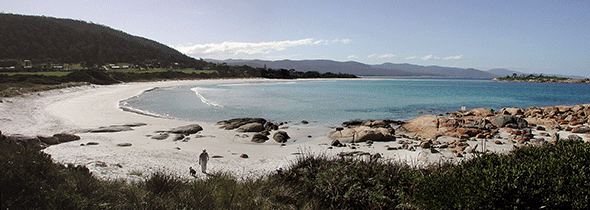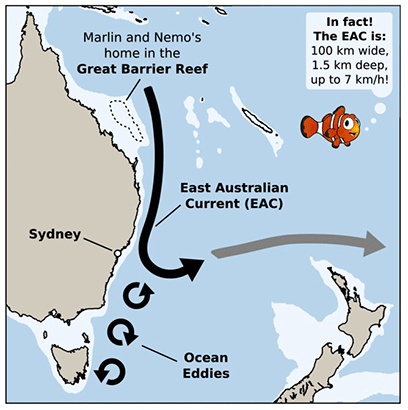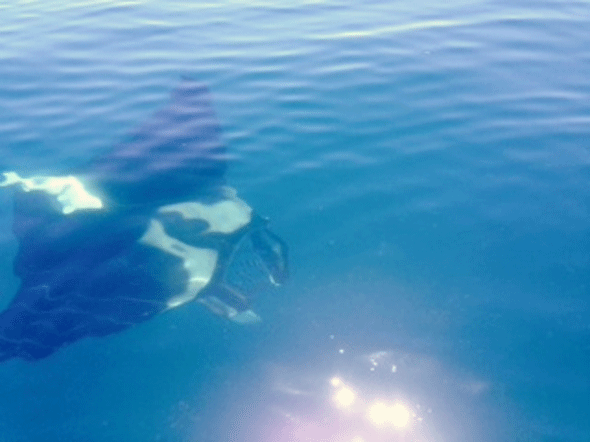
|
Published: 30 July 2012
Carbon accounting: our newest, cleanest export?
Australian company CarbonSystems made headlines around the world in May when it won the contract to provide Microsoft with software for monitoring and managing carbon emissions. A track record in carbon accounting – thanks to Australia’s introduction of a National Greenhouse and Energy Reporting (NGER) Act in 2007 – helped tip the decision in its favour.
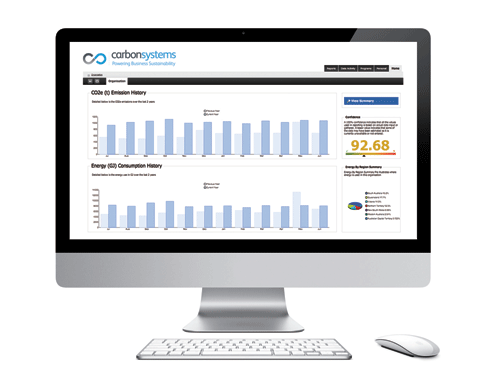
|
|
Balancing the books: carbon accounting prompts companies to look at the bigger picture, such as their energy use. Credit:
CarbonSystems
|
‘There is no doubt that being incubated in Australia was the best thing for us because of that real world experience with NGER and that leadership around the compliance reporting of carbon,’ says CarbonSystems’ CEO and co-founder, David Solsky. ‘That was the catalyst that unquestionably got this business going.’
As a result of the Microsoft contract, CarbonSystems has a higher profile in North America than locally, and has received enquiries from ‘very large Fortune 500 companies’.
CarbonSystems' success – along with overseas interest in the National Carbon Accounting Toolbox, in which CSIRO is a partner – means Australian carbon accounting systems have become a growing export industry. In fact, Mr Solsky argues Australia has a ‘strong position of leadership’ in carbon accounting.
The NGER Act requires large companies to report their greenhouse gas emissions annually. Large companies are those emitting more than 25,000 tonnes of carbon dioxide equivalent, or consuming more than 25,000 megawatt hours of electricity or 2.5 million litres of fuel in a financial year.
The federal government introduced the legislation to provide a reporting framework for an emissions trading scheme – introduced in July this year after years of public debate – and to help meet Australia's international greenhouse gas reporting obligations.
Mr Solsky, who previously worked in information technology and accountancy, co-founded CarbonSystems in 2008. ‘We saw the challenge emerging for business around how they were going to capture and manage and report all the information in relation to carbon footprints, energy, and even sustainability,’ he comments.
The company had to build its software programs from scratch at a time when the global financial crisis was causing havoc in the business world.
‘We managed to come through those early high-risk years, and we have now built a good platform, a good team of about 55 people,’ says Mr Solsky.
CSIRO – which aims to become carbon neutral by 2015 – was one of CarbonSystems’ first major government customers.
Mr Solsky says the introduction of the NGER scheme was a proving ground. ‘You are reporting to the government and these reports are being audited, so it gave us some really good insights into how you had to manage data, maintain audit trails: some of the complexities that maybe our competitors didn't get to see operating in more voluntary environments.’
The company moved into overseas markets in 2010. ‘Clients were very impressed by the technology that we had built,’ he explains. ‘A lot of our United States competitors built technology, but didn't have the benefit of operating in a real-world environment.’
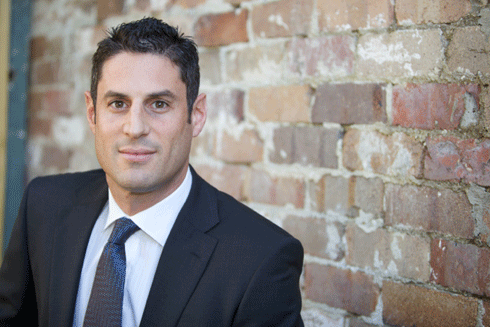
|
|
David Solsky from CarbonSystems: a ‘green economy’ business that has benefited from Australia’s early initiatives in carbon accounting. Credit:
CarbonSystems
|
Mathew Nelson is the Oceania Climate Change and Sustainability Services Leader with Ernst & Young. He has seen a significant growth in businesses establishing their greenhouse gas inventory, with larger companies generally having taken the lead.
‘We expect, and are already starting to see, a further increase in focus for some of the largest emitters, as a result of a price being applied to carbon [from 1 July],’ says Mr Nelson.
‘The very large companies typically have the resources available to implement an NGER-style report. However, there are now a number of small-to-medium-size enterprises that will be captured by the [new] legislation, and they find themselves with significant challenges.’
Within his own company, Mr Nelson has noticed that carbon accounting skills already developed in Australia are proving useful overseas. ‘We can learn a lot from what we have done here, and transfer [skilled people] to places in the Americas, Asia or Europe.’
Like Mr Solsky, he believes Australian carbon accounting is ‘up with the most developed in the world’. But, Mr Nelson thinks broader sustainability accounting – for example, carbon footprinting and product/service life-cycle assessment – has ‘a fair way to go in Australia’.
Sumit Lodhia is a senior lecturer in accounting at the University of South Australia, teaching sustainability and carbon accounting. He has worked with major companies on carbon reporting, and has written academic papers on the topic.
Dr Lodhia thinks Australia, after its experience with NGER, will adapt more quickly to a carbon price than did European countries over recent years.
‘The NGER Act feeds into carbon pricing, and that is where we have a massive advantage,’ he says. But, he hesitates to call Australia a world leader in carbon accounting, noting ‘we need evidence on that, but I am an accountant, so I am conservative.’
All three experts agree that carbon accounting prompts companies to look at the bigger picture.
Dr Lodhia says many companies have no idea about their electricity use. But, knowledge gained through carbon accounting can lead to changes. ‘Essentially, what we are doing through carbon accounting is internalising an externality,’ he says. ‘That is something that has benefits. You make changes and you find a better way of doing things.’
Mr Nelson agrees that putting a price on carbon will drive change within both consumer and business communities. ‘They will change their investment decisions, and we are already starting to see that.’
The prospect of continually rising energy prices will make carbon accounting even more attractive to businesses, says Mr Solsky. ‘Sustainability is an issue that is not going to be leaving the corporate agenda and the boardroom any time soon, and people want to save money.’
He says the next challenge for CarbonSystems is to develop real-time energy and sustainability performance management systems. ‘All the drivers are heading in the right direction; for us, it is now a matter of execution. It is a very exciting future.’
|
The CSIRO – in partnership with the Australian National University and the Department of Climate Change and Energy Efficiency – has developed and updated an accounting system to estimate land-based carbon stores. |
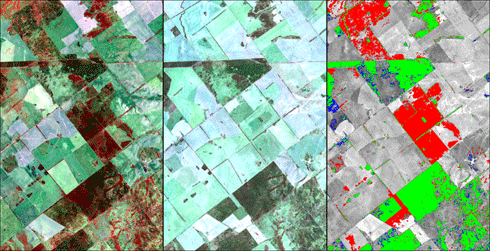
Vegetation changes in farmland near Nyngan, NSW, as monitored using satellite imagery in association with NCAS. Credit: CSIRO
|
The National Carbon Accounting System (NCAS) is designed to keep track of Australia’s emissions from all land-based activities. NCAS was selected by the Clinton Climate Initiative as the basis for a global carbon monitoring system aimed at helping all countries comply with international carbon reporting standards. |
With the national carbon accounting system now well established in Australia, researchers have moved their focus offshore, with NCAS pilot studies being run in China. Discussions are also under way with developing countries in Africa and Asia. |
The system includes a National Carbon Accounting Toolbox (NCAT) – the government-approved method for calculating carbon storage and emissions on vegetated land. It is issued to users by the Australian Department of Climate Change. |
NCAT includes satellite images that go back to 1972, although 1990 is the baseline year for greenhouse gas emissions under the Kyoto Protocol . |
CSIRO’s Suzanne Furby explains that if a land manager cleared land in 1990, with the land use changing from forest to something else, there would be a time lag in the emissions from that land. ‘If you want to know exactly what your emissions are in 1990, you have to look back to the early 1970s to get an accurate baseline,’ she says. |
In the early days of the Kyoto Protocol, the highest levels of uncertainty in relation to Australia’s emissions were associated with land cover and land use change. Ms Furby says carbon emissions from changes in land use, mostly clearing, were estimated to account for about one-third of Australia's emissions in 1990, ‘but [governments] didn't have a handle on it’. |
Emissions from land use changes in Australia have since fallen, largely due to changes in state legislation regulating land clearing, and growing environmental concern among landowners. |
Ms Furby says Australia is keen to partner developing nations, to assist them in their carbon accounting. Her group has been working on an Indonesian/Australian forest carbon partnership program, which involves local training and technical support and is regarded as ‘hugely significant’ to Indonesia. |
In May 2010, Norway agreed to pay Indonesia $US1 billion if it reduced deforestation. The reduction has to be measurable, reportable and verifiable. CSIRO is assisting Indonesia to set up a carbon-reporting system as part of an Australian contribution to the initiative. |
‘It is one thing to know have you cleared the forest or not, but then you need to know how much carbon was tied up in that forest and what is involved in the new land-use change,’ says Ms Furby. |
More information
Australia's National Carbon Accounting System leads the world


